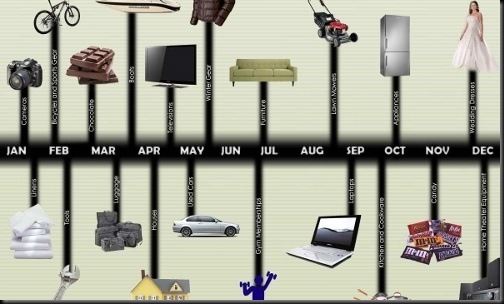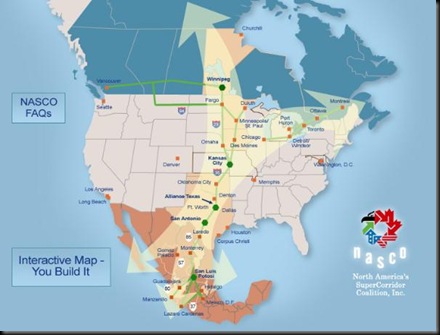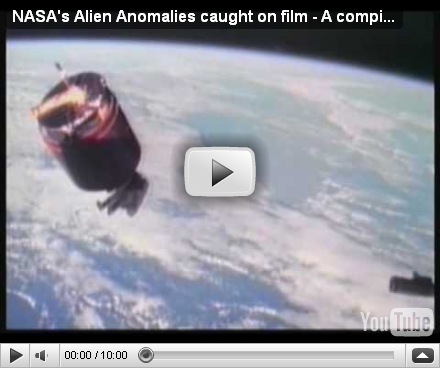
Communication Prosthesis - simulator of Smiles
Many people in this world is very difficult to openly express their emotions. Why are there! Many people do not know how to smile! That in order to develop this ability, designer Sasha Nordmeyer (Sascha Nordmeyer) has developed an unusual simulator called Communication Prosthesis.
The vast majority of jobs associated with the communication. Even professionals such as cooks, mechanics and others, would not seem very open before the people now should be able to hold onto the audience and, of course, be able to smile. But it's not all succeed.
That's for people who can not smile, designer Sasha Nordmeyer created simulator smile titled Communication Prosthesis
That's for people who can not smile, designer Sasha Nordmeyer created simulator smile titled Communication Prosthesis
Gradually, her lips are getting used to it and people can easily and easy smile. And his smile looks beautiful and sincere.
So in the near future will not be gloomy people.
Will be made only by people who at one time friends or relatives gave trainer Communication Prosthesis by Sasha Nordmeyer.
Best time to buy

We scoured the net for advice from financial sites, gadget bloggers, and other sources on the best times to buy particular items, ranging from little goods you can stock up on (aluminum foil) to big-time purchases you can easily overpay for in the wrong season (boats). We threw together all these tips, organized them by time frame, and, through the keen eye of one Jason Fitzpatrick, assembled a timeline of some of the major items to keep in mind throughout the year.
Forget global warming: Welcome to the new Ice Age
The U.S. National Climatic Data Center (NCDC) reported that many American cities and towns suffered record cold temperatures in January and early February. According to the NCDC, the average temperature in January "was -0.3 F cooler than the 1901-2000 (20th century) average."
China is surviving its most brutal winter in a century. Temperatures in the normally balmy south were so low for so long that some middle-sized cities went days and even weeks without electricity because once power lines had toppled it was too cold or too icy to repair them.
There have been so many snow and ice storms in Ontario and Quebec in the past two months that the real estate market has felt the pinch as home buyers have stayed home rather than venturing out looking for new houses.
In just the first two weeks, Toronto received 70 cm of snow, smashing the record of 66.6 cm for the entire month set back in the pre-SUV, pre-Kyoto, pre-carbon footprint days of 1950.
And remember the Arctic Sea ice? The ice we were told so hysterically last fall had melted to its "lowest levels on record? Never mind that those records only date back as far as 1972 and that there is anthropological and geological evidence of much greater melts in the past.
The ice is back.
Gilles Langis, a senior forecaster with the Canadian Ice Service in Ottawa, says the Arctic winter has been so severe the ice has not only recovered, it is actually 10 to 20 cm thicker in many places than at this time last year.
OK, so one winter does not a climate make. It would be premature to claim an Ice Age is looming just because we have had one of our most brutal winters in decades.
But if environmentalists and environment reporters can run around shrieking about the manmade destruction of the natural order every time a robin shows up on Georgian Bay two weeks early, then it is at least fair game to use this winter's weather stories to wonder whether the alarmist are being a tad premature.
And it's not just anecdotal evidence that is piling up against the climate-change dogma.
According to Robert Toggweiler of the Geophysical Fluid Dynamics Laboratory at Princeton University and Joellen Russell, assistant professor of biogeochemical dynamics at the University of Arizona -- two prominent climate modellers -- the computer models that show polar ice-melt cooling the oceans, stopping the circulation of warm equatorial water to northern latitudes and triggering another Ice Age (a la the movie The Day After Tomorrow) are all wrong.
"We missed what was right in front of our eyes," says Prof. Russell. It's not ice melt but rather wind circulation that drives ocean currents northward from the tropics. Climate models until now have not properly accounted for the wind's effects on ocean circulation, so researchers have compensated by over-emphasizing the role of manmade warming on polar ice melt.
But when Profs. Toggweiler and Russell rejigged their model to include the 40-year cycle of winds away from the equator (then back towards it again), the role of ocean currents bringing warm southern waters to the north was obvious in the current Arctic warming.
Last month, Oleg Sorokhtin, a fellow of the Russian Academy of Natural Sciences, shrugged off manmade climate change as "a drop in the bucket." Showing that solar activity has entered an inactive phase, Prof. Sorokhtin advised people to "stock up on fur coats."
He is not alone. Kenneth Tapping of our own National Research Council, who oversees a giant radio telescope focused on the sun, is convinced we are in for a long period of severely cold weather if sunspot activity does not pick up soon.
The last time the sun was this inactive, Earth suffered the Little Ice Age that lasted about five centuries and ended in 1850. Crops failed through killer frosts and drought. Famine, plague and war were widespread. Harbours froze, so did rivers, and trade ceased.
It's way too early to claim the same is about to happen again, but then it's way too early for the hysteria of the global warmers, too.
Interesting Facts About Earth

Earth is the only planet in the Solar System with plate tectonics. The outer crust of the Earth is broken up into regions known as tectonic plates. These are floating on top of the magma interior of the Earth and can move against one another. When two plates collide, one plate can go underneath another.
This process is very important. When microscopic plants in the ocean die, they fall to the bottom of the ocean. Over long periods of time, the remnants of this life, rich in carbon, are carried back into the interior of the Earth and recycled. This pulls carbon out of the atmosphere, which makes sure we don't get a runaway greenhouse effect, like what happened on Venus.
Without the plate tectonics, there'd be no way to recycle this carbon, and the Earth would overheat.
The Earth's shape could be described as an oblate spheroid. It's kind of like a sphere, but the Earth's rotation causes the equator to bulge out . What this means is that the measurement from pole to pole is about 43 km less than the diameter of Earth across the equator.
Even though the tallest mountain on Earth is Mount Everest, the feature that's furthest from the center of the Earth is actually Mount Chimborazo in Ecuador.
Earth is mostly iron, oxygen and silicon
If you could separate the Earth out into piles of material, you'd get 32.1 % iron, 30.1% oxygen, 15.1% silicon, and 13.9% magnesium. Of course, most of this iron is actually down at the core of the Earth. If you could actually get down and sample the core, it would be 88% iron. 47% of the Earth's crust consists of oxygen.
When astronauts first went into the space, they looked back at the Earth with human eyes for the first time, and called our home the Blue Planet. And it's no surprise. 70% of our planet is covered with oceans. The remaining 30% is the solid ground, rising above sea level.
The Earth's atmosphere extends out to 10,000km

The atmosphere is thickest within the first 50 km or so, but it actually reaches out to about 10,000 km above the surface of the planet. This outermost layer of the atmosphere is called the exosphere, and starts about 500 km above the surface of the Earth. As we said, it goes all the way up to 10,000 km above the surface. At this point, free-moving particles can actually escape the pull of Earth's gravity, and be blown away by the Sun's solar wind.
But this high atmosphere is extremely thin. The bulk of the Earth's atmosphere is down near the Earth itself. In fact, 75% of the Earth's atmosphere is contained within the first 11 km above the planet's surface.
Be grateful for the magnetosphere. Without it particles from the Sun's solar wind would hit the Earth directly, exposing the surface of the planet to significant amounts of radiation. Instead, the magnetosphere channels the solar wind around the Earth, protecting us from harm.
Scientists think that the magnetic field is generated by the molten outer core of the Earth, where heat creates convection motions of conducting materials. This generates electric currents that create the magnetic field.
Remember that the Earth orbits around the Sun. Every day, the Sun moves compared to the background stars by about 1° – about the size of the Moon in the sky. And so, if you add up that little motion from the Sun that we see because the Earth is orbiting around it, as well as the rotation on its axis, you get a total of 24 hours. Now that sounds like the day we know.
As you're probably aware, Earth has 1 moon (The Moon). But did you know there are 2 additional asteroids locked into a co-orbital orbits with Earth? They're called 3753 Cruithne and 2002 AA29. We won't go into too much detail about the Moon, I'm sure you've heard all about it.
3753 Cruithne is 5 km across, and sometimes called Earth's second moon. It doesn't actually orbit the Earth, but has a synchronized orbit with our home planet. It has an orbit that makes it look like it's following the Earth in orbit, but it's actually following its own, distinct path around the Sun.
2002 AA29 is only 60 meters across, and makes a horseshoe orbit around the Earth that brings it close to the planet every 95 years. In about 600 years, it will appear to circle Earth in a quasi-satellite orbit. Scientists have suggested that it might make a good target for a space exploration mission.
We've discovered past evidence of water on Mars, and the building blocks of life on Saturn's moon Titan. We can see amino acids in nebulae in deep space. But Earth is the only place life has actually been discovered.
But if there's life on other planets, scientists are building the experiments that will help find it. A new rover called the Mars Science Laboratory will be heading to Mars in the next few years, equipped with experiments that can detect life in the soil on the Red Planet. Giant radio dishes scan distant stars, listening for the characteristic signals of intelligent life reaching out across interstellar space. And new space telescopes, such as the European Space Agency's Darwin mission might be powerful enough to sense the presence of life on other worlds.
But for now, Earth is the only place we know where there's life. Now that is an interesting fact.
I hope you enjoyed these 10 interesting facts about Earth.
Are you ready for The AMERO?

Hold onto your hats. (Or should that be dollars?) The Amero is coming. I’ve heard a lot of talk over the last few years about a new currency called the Amero that will replace dollars and pesos.
I thought at first it was just conjecture and gossip, but the more I have researched it, the more I believe it is not only real…but coming soon. And as a writer who has your best monetary interests at heart, I feel you need to know at least a little about this.
A North American Union (NAU) with a common currency is not a new idea. Herbert G. Grubel, a senior fellow of the Fraser Institute, came out with a book entitled “The Case for the Amero” in September of 1999. But the mass media has largely ignored it, with both the supporters and critics of the plan being relegated to obscure talk radio and Internet sites (hopefully, this one doesn’t fall into the latter).

However, since 1999 a case has been building for the new currency, and some believe the current administration is setting the stage for the introduction of the Amero very soon, as soon as 2010 some believe. The lack of serious intervention on illegal immigration coupled with the continued devaluation of the dollar and its weakness in the world economy is in fact the perfect place to set the foundation for a new currency. Or so I’ve been told by various economists with far more smarts than myself.
The Security And Prosperity Partnership Of North America.
This is where many people believe the Amero will stem from. This is not a phantom organization or conspiracy theory, the SPP exists and you can view it yourselves at www.spp.gov . It was a 'dialogue' (some say agreement) between President Bush, Prime Minister Harper and President Fox to enhance security and prosperity among the three nations (prosperity for whom is obviously debatable).
What you’ll notice is that the SPP is a trilateral partnership established to keep North America a safe and secure place to live and work. So why the open borders and lack of serious control on illegal immigration? Surely such a plan would involve tighter security, not weaker.
Well, it comes down to this. If there is a plan in the works to create a union of Canada, the USA and Mexico, the last thing you’d want to do is close the borders. Quite the opposite. You want open borders. It’s good for business. And as we all know, big business and large multi-national corporations are always looking for new ways to make a profit. The NAU and the Amero is one such way.
The AMERO – who benefits?
That’s the big question. Now, in Europe the Euro was not such a bad idea (although I know many people who disagree). The countries of Europe are all fairly well matched economically. So, it made sense to simply create a Euro and encourage cost-effective trade between all the separate nations (of course my home country Great Britain is still being difficult…as we always are). It also reduced a whole bunch of costs associated with exchange rates, fees and so forth.
However, Canada, the USA and Mexico are hardly the same economically. For a world super-power like the USA to consider diluting its economy with that of Canada and a ‘third world’ nation like Mexico, rife with corruption, seems at first ill-conceived. Unless, of course, the ultimate goal is to create “corporatism” – the merger of big business with big government (and something Mussolini referred to as the foundation of fascism).
Basically, with the NAU, multinationals are dealing with one currency (the Amero), one controlling entity (government) and one set of rules for all. And the benefit? Simple. To enable the sale, purchase and movement of goods across the former three nations effortlessly and cheaply. And let’s not forget the creation of a super-cheap workforce and the eventual destruction of the middle class (which is already happening).
As you can tell, I’m clearly not a supporter of the NAU. But I’m not a supporter of any policy that seeks to make the rich even richer, and make a profit at the expense of the public. As Tom DeWeese wrote in his article for the American Policy Center, “The SPP is not about free trade. Its use of public/private partnerships creates an elite of certain, chosen global corporations which basically become part of government at the expense of their competition and our national independence.”
The NAFTA Super Highway.
Also known as the Trans Texas Corridor, this is another huge benefit to big corporations that would be made possible by the NAU and the Amero.

It is basically a massive super-highway, ten lanes wide, with rail lines, utility corridors and natural gas and oil power lines running down the center. It’s purpose? To transport containers loaded in foreign lands (Indonesia, China etc) from Mexican ports, through the USA and up to Canada with massively reduced transportation costs. Such a move would only decrease the security of America, to such an extent that the borders would literally be wiped out. And the flood of Mexican trucks using the highway would not be required to meet current US standards of safety. Getting the picture? At the end of the day, the Amero is a move to will make a select few so rich, they’ll make Bill Gates look like a welfare case. Money is power…and ultimately, that’s what this is all about.
What can you do about it?
Well, keeping yourselves informed is the first step. I haven’t even scratched the surface here. So far, the public has been kept in the dark about the Amero and the NAU, and before you get a chance to protest you’ll be spending you new, devalued currency and wondering what happened.
Here are the links to several sites you can read. I have included information that’s both for and against the NAU and Amero, you are all smart people, you can chew the facts over and make up your own minds.

Understanding the Home Loan Application and Mortgage Approval - The Mortgage Lender Analysis

Do You Pass The Mortgage Lender Analysis? When a mortgage lender reviews a real estate loan application, the primary concern for both home loan applicant, the buyer, and the mortgage lender is to approve loan requests that show high probability of being repaid in full and on time, and to disapprove requests that are likely to result in default and eventual foreclose. How is the mortgage lenders decision made?
The mortgage lender begins the loan analysis procedure by looking at the property and the proposed financing. Using the property address and legal description, an appraiser is assigned to prepare an appraisal of the property and a title search is ordered. These steps are taken to determine the fair market value of the property and the condition of title. In the event of default, this is the collateral the lender must fall back upon to recover the loan. If the loan request is in connection with a purchase, rather than the refinancing of an existing property, the mortgage lender will know the purchase price. As a rule, home loans are made on the basis of the appraised value or purchase price, whichever is lower. If the appraised value is lower than the purchase price, the usual procedure is to require the buyer to make a larger cash down payment. The mortgage lender does not want to over-loan simply because the buyer overpaid for the property.
The year the home was built is useful in setting the loan's maturity date. The idea is that the length of the home loan should not outlast the remaining economic life of the structure serving as collateral. Note however, chronological age is only part of this decision because age must be considered in light of the upkeep and repair of the structure and its construction quality.
Loan-to-Value Ratios
The mortgage lender next looks at the amount of down payment the borrower proposes to make, the size of the loan being requested and the amount of other financing the borrower plans to use. This information is then converted into loan-to-value ratios. As a rule, the more money the borrower places into the deal, the safer the loan is for the mortgage lender. On an uninsured home loan, the ideal loan-to-value ratio for a lender on owner-occupied residential property is 70% or less. This means the value of the property would have to fall more than 30% before the debt owed would exceed the property's value, thus encouraging the borrower to stop making mortgage loan payments. Because of the nearly constant inflation in housing prices since the 40s, very few residential properties have fallen 30% or more in value.
Loan-to-value ratios from 70% through 80% are considered acceptable but do expose the mortgage lender to more risk. Lenders sometimes compensate by charging slightly higher interest rates. Loan-to-value ratios above 80% present even more risk of default to the lender, and the lender will either increase the interest rate charged on these home loans or require that an outside insurer, such as FHA or a private mortgage insurer, be supplied by the borrower.
Mortgage Closing Settlement Funds
The lender then wants to know if the borrower has adequate funds for settlement (the closing). Are these funds presently in a checking or savings account, or are they coming from the sale of the borrower's present real estate property? In the latter case, the mortgage lender knows the present loan is contingent on another closing. If the down payment and settlement funds are to be borrowed, then the lender will want to be extra cautious as experience has shown that the less of his own money a borrower puts into a purchase, the higher the probability of default and foreclosure.
Purpose Of Mortgage Loan
The lender is also interested in the proposed use of the property. Mortgage lenders feel most comfortable when a home loan is for the purchase or improvement of a property the loan applicant will actually occupy. This is because owner-occupants usually have pride-of-ownership in maintaining their property and even during bad economic conditions will continue to make the monthly payments. An owner-occupant also realizes that if he/she stops paying, they will have to vacate and pay for shelter elsewhere.
If the home loan applicant intends to purchase a dwelling to rent out as an investment, the lender will be more cautious. This is because during periods of high vacancy, the property may not generate enough income to meet the loan payments. At that point, a strapped-for-cash borrower is likely to default. Note too, that lenders generally avoid loans secured by purely speculative real estate. If the value of the property drops below the amount owed, the borrower may see no further logic in making the loan payments.
Lastly the mortgage lender assesses the borrower's attitude toward the proposed loan. A casual attitude, such as "I'm buying because real estate always goes up," or an applicant who does not appear to understand the obligation he is undertaking would bring low rating here. Much more welcome is the home loan applicant who shows a mature attitude and understanding of the mortgage loan obligation and who exhibits a strong and logical desire for ownership.
The Borrower Analysis
The next step is the mortgage lender to begin an analysis of the borrower, and if there is one, the co-borrower. At one time, age, sex and marital status played an important role in the lender's decision to lend or not to lend. Often the young and the old had trouble getting home loans, as did women and persons who were single, divorced, or widowed. Today, the Federal Equal Credit Opportunity Act prohibits discrimination based on age, sex, race and marital status. Mortgage lenders are no longer permitted to discount income earned by women even if it is from part-time jobs or because the woman is of child-bearing age. Of the home applicant chooses to disclose it, alimony, separate maintenance, and child support must be counted in full. Young adults and single persons cannot be turned down because the lender feels they have not "put down roots." Seniors cannot be turned down as long as life expectancy exceeds the early risk period of the loan and collateral is adequate. In other words, the emphasis in borrower analysis is now focused on job stability, income adequacy, net worth and credit rating.
Mortgage lenders will ask questions directed at how long the applicants have held their present jobs and the stability of those jobs themselves. The lender recognizes that loan repayment will be a regular monthly requirement and wishes to make certain the applicants have a regular monthly inflow of cash in a large enough quantity to meet the mortgage loan payment as well as their other living expenses. Thus, an applicant who possesses marketable job skills and has been regularly employed with a stable employer is considered the ideal risk. Persons whose income can rise and fall erratically, such as commissioned salespersons, present greater risk. Persons whose skills (or lack of skills) or lack of job seniority result in frequent unemployment are more likely to have difficulty repaying a home loan. The mortgage lender also inquires as to the number of dependents the applicant must support out of his or her income. This information provides some insight as to how much will be left for monthly house payments.
Home Loan Applicants' Monthly Income
The lender looks at the amount and sources of the applicants' income. Sheer quantity alone is not enough for home loan approval; the income sources must be stable too. Thus a lender will look carefully at overtime, bonus and commission income in order to estimate the levels at which these may reasonably be expected to continue. Interest, dividend and rental income would be considered in light of the stability of their sources also. Under the "other income" category, income from alimony, child support, social security, retirement pensions, public assistance, etc. is entered and added to the totals for the applicants.
The lender then compares what the applicants have been paying for housing with what they will be paying if the loan is approved. Included in the proposed housing expense total are principal, interest, taxes and insurance along with any assessments or homeowner association dues (such as in a condominium or townhomes). Some mortgage lenders add the monthly cost of utilities to this list.
A proposed monthly housing expense is compared to gross monthly income. A general rule of thumb is that monthly housing expense (PITI) should not exceed 25% to 30% of gross monthly income. A second guideline is that total fixed monthly expenses should not exceed 33% to 38% of income. This includes housing payments plus automobile payments, installment loan payments, alimony, child support, and investments with negative cash flows. These are general guidelines, but mortgage lenders recognize that food, health care, clothing, transportation, entertainment and income taxes must also come from the applicants' income.
Liabilities and Assets
The lender is interested in the applicants' sources of funds for closing and whether, once the loan is granted, the applicants have assets to fall back upon in the event of an income decrease (a job lay-off) or unexpected expenses such as hospital bills. Of particular interest is the portion of those assets that are in cash or are readily convertible into cash in a few days. These are called liquid assets. If income drops, they are much more useful in meeting living expenses and mortgage loan payments than assets that may require months to sell and convert to cash; that is, assets which are illiquid.
A mortgage lender also considers two values for life insurance holders. Cash value is the amount of money the policyholder would receive if he surrendered his/her policy or, alternatively, the amount he/she could borrow against the policy. Face amount is the amount that would be paid in the event of the insured's death. Mortgage lenders feel most comfortable if the face amount of the policy equals or exceeds the amount of the proposed home loan. Less satisfactory are amounts less than the proposed loan or none at all. Obviously a borrower's death is not anticipated before the loan is repaid, but lenders recognize that its possibility increases the probability of default. The likelihood of foreclosure is lessened considerably if the survivors receive life insurance benefits.
A lender is interested in the applicants' existing debts and liabilities for two reasons. First, these items will compete each month against housing expenses for available monthly income. Thus high monthly payments may reduce the size of the loan the lender calculates that the applicants will be able to repay. The presence of monthly liabilities is not all negative: it can also show the mortgage lender that the applicants are capable of repaying their debts. Second, the mortgage applicants' total debts are subtracted from their total assets to obtain their net worth. If the result is negative (more owed than owned), the mortgage loan request will probably be turned down as too risky. In contrast, a substantial net worth can often offset weaknesses elsewhere in the application, such as too little monthly income in relation to monthly housing expense.
Past Credit Record
Lenders examine the applicants' past record of debt repayment as an indicator of the future. A credit report that shows no derogatory information is most desirable. Applicants with no previous credit experience will have more weight placed on income and employment history. Applicants with a history of collections, adverse judgments or bankruptcy within the past three years will have to convince the lender that this mortgage loan will be repaid on time. Additionally, the applicants may be considered poorer risks if they have guaranteed the repayment of someone else's debt by acting as a co-maker or endorser. Lastly, the lender may take into consideration whether the applicants have adequate insurance protection in the event of major medical expenses or a disability that prevents returning to work.
When a mortgage lender will not provide a loan on a property, one must seek alternative sources of financing or lose the right to purchase the home.
Michael Moore:Capitalism - ‘Legalized Greed’
Michael Moore, the man of many hats - documentary filmmaker, political scientist and now, singer.
Moore has been making the rounds to promote his new movie, "Capitalism: A Love Story."
Moore appeared and was asked what was wrong with capitalism.
"Capitalism is actually legalized greed," Moore said. "There's nothing wrong with people earning money, starting a business, selling shoes. That's not what I'm talking about. We're at a point now Jay, in this country, where the richest 1 percent, the very top 1 percent have more financial wealth than the bottom 95 percent combined."
Moore explained that his vision of democracy is redistributionist, and he gave no voice to the idea that self-reliance and hard work can propel one to great wealth.
"That's insane, we live in a democracy," Moore continued. "We're supposed to have like fairness and equality. And you know when you have a pie on the table ... there's 10 slices and one guy at the table says nine of those slices are mine and the other nine of you, you can fight over the last slice. I mean that's essential the kind of economy we have now."
However, Moore didn't just use the platform of Jay Leno's new show to plug his campaign against the American style of capitalism. He also showcased his vocal abilities and performed Bob Dylan's "The Times They Are A-changin'":
Come senators, congressmen
Please heed the call
Don't stand in the doorway
Don't block up the hallFor he who gets hurt
Is he who has stalled
There's a battle outside and it's ragin'Please, it'll shake your windows
And rattle your walls
For the times, they are a-changin'Come mothers and fathers throughout the land
Don't criticize what you can't understand
Your sons and your daughters are beyond your command
Your old road is rapidly agin'Please get out of the new one
If you can't lend a hand
For the times, they are a-changin'
Astonishing Burj Dubai Opening Fireworks


























